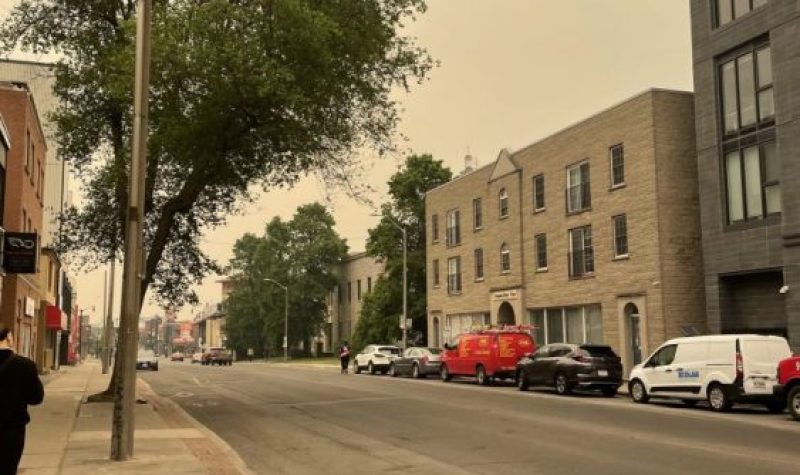Kingston is seeing blue skies again after smokey conditions last week as a result of the wildfires in Quebec and northeastern Ontario.
While conditions cleared up on Thursday, with Air Quality Health Index readings returning to low-risk territory after staggering 10+ ratings earlier in the week, many Canadians are still looking for answers on what impacts continued exposure may have on their health.
Wildfire season has had an early and active start, and according to a recent update from the Government of Canada, June projections indicate the possibility of continued “higher-than-normal fire activity” throughout the summer.
Wildfire smoke impacts
Some short-term impacts of low air quality may include eye irritation, throat irritation, and flare-ups of some pre-existing conditions like asthma or eczema.
When asked about when to be concerned about long term impacts of smoke inhalation, Respirologist at Kingston Health Sciences and Queen's University Dr. Michael Fitzpatrick, explained that while there's a good amount of research, the exposure "cutoff" point is not known.
“There's been quite a bit of research about smoke pollution exposure, but there's no clear evidence where that cutoff occurs," Fitzpatrick said. "We know that we get irritation in our eyes and nose and throat from short-term exposure, even just being out for 15 or 20 minutes would be enough to do that. But when it comes to things like, for example, some of the mental health issues related to smoke pollution exposure, we think that these are a little bit longer, but there's no clear timeline.”
Dr. Hwashin Shin, Research Scientist with the Environmental Health Science and Research Bureau of Health Canada, and Professor in the Department of Mathematics and Statistics at Queens University, echoes this sentiment and provides some tips to stay healthy.
“My suggestion to avoid long-term exposure is to listen to the AQHI, that is the Air Quality Health Index, and Kingston has it for every hour, real-time forecasting. So if it is high, then please definitely avoid going out,” said Shin.
“And if you are seniors or pregnant or young children, then definitely avoid going out whenever there is a high risk. So you don't need to know the real concentrations, but if you know the index, it is from 0 to 10, and the highest AQHI is 11, or we just call it 10 plus, then if it is higher than 8 or 7, then I would avoid or cancel any outdoor activity or meeting outside,” Shin added.
To mitigate the impact of deteriorating air quality on the body, Fitzpatrick and Shin, suggest checking the Air Quality Health Index before heading outside to assess the risk level. When air quality is at a higher risk level, staying inside if possible, wearing an N95 mask when going outdoors, and avoiding outdoor exercise are some suggestions to avoid negative health outcomes.
To check the Air Quality Health Index for your city in Ontario and to and find more health and safety information, visit the website.
Listen to the full story featuring interviews with experts Dr. Hwashin Hyun Shin and Dr. Michael Fitzpatrick below:


